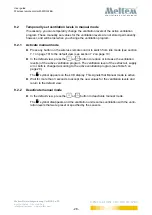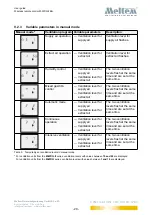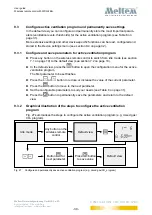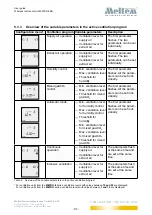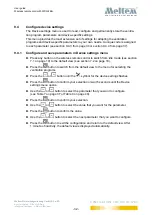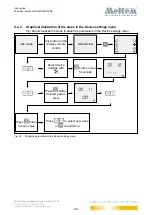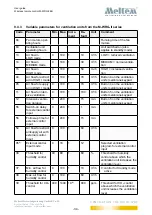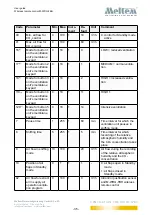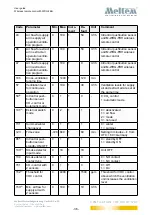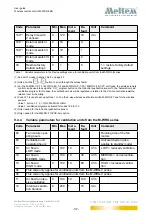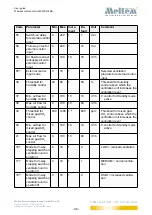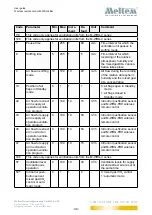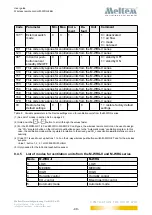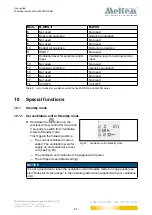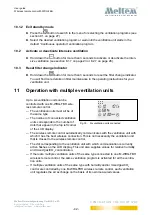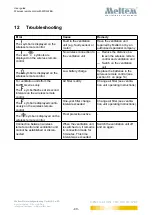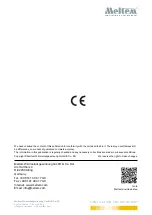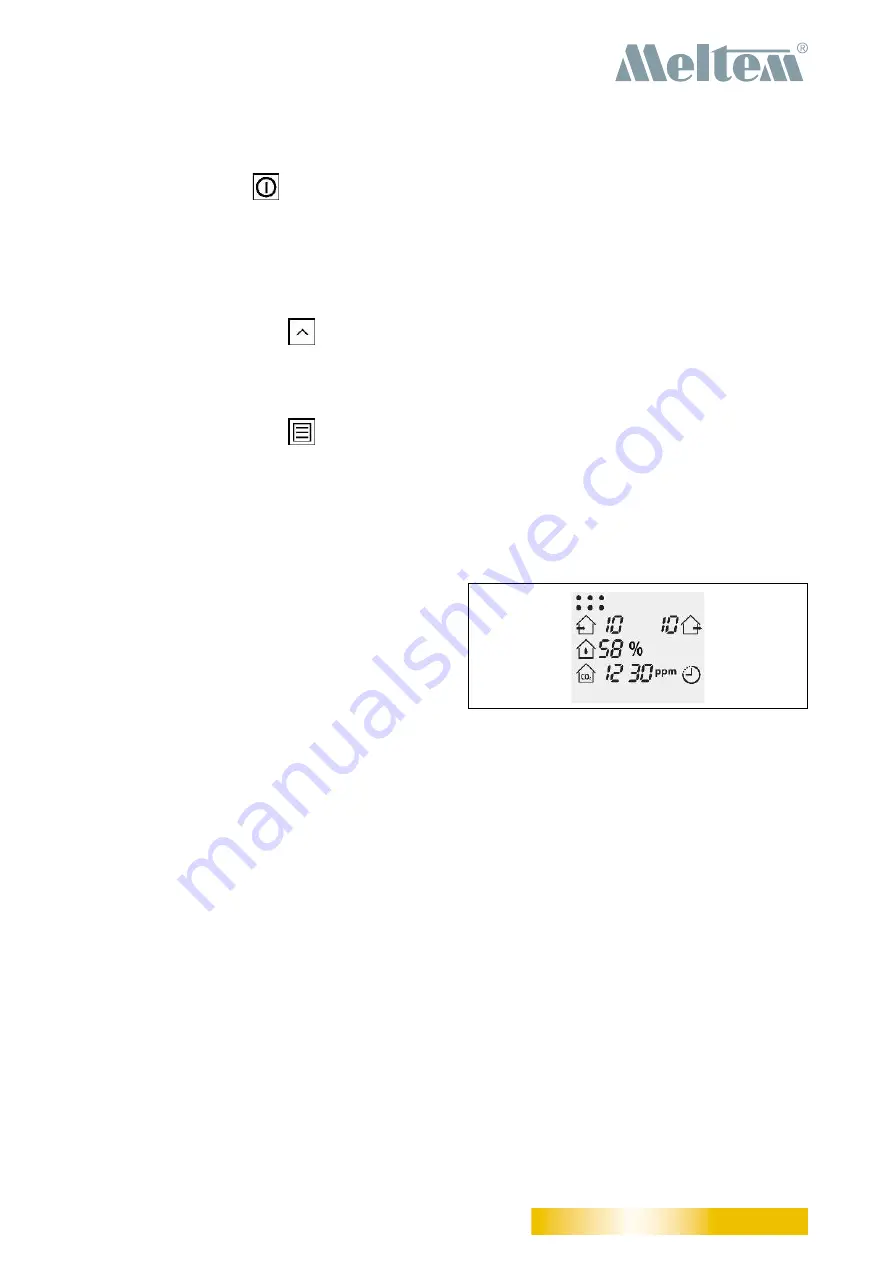
User guide
Wireless remote control M-WRG-FBH
- 42 -
Meltem Wärmerückgewinnung GmbH & Co. KG
Am Hartholz 4 · D-82239 Alling
info@meltem.com · www.meltem.com
VENTILATION THE RIGHT WAY
V E N T I L A T I O N & H E A T R E C O V E R Y
10.1.2 Exit standby mode
►
Press the
button to switch to the menu for selecting the ventilation programs (see
►
Select the desired ventilation program or wait until the ventilation unit starts in the
default “Continuous operation” ventilation program.
10.2
Activate or deactivate intensive ventilation
►
Hold down the
button for more than 3 seconds to activate or deactivate the inten-
sive ventilation (see section 8.1.7 on page 23 or 8.2.7 on page 26).
10.3
Reset filter change indicator
►
Hold down the
button for more than 3 seconds to reset the filter change indicator.
You will find more details on filter maintenance in the operating instructions for your
ventilation unit.
11 Operation with multiple ventilation units
Up to six ventilation units can be
controlled with one M-WRG-FBH wire-
less remote control.
— The ventilation units must all be of
the same type.
— The number of connected ventilation
units corresponds to the number of
dots that appear in the top left corner
of the LCD display.
— The wireless remote control automatically communicates with the ventilation unit with
which it has the best wireless connection. This is not necessarily the ventilation unit
that is closest to the wireless remote control.
— The dot corresponding to the ventilation unit with which communication is currently
active flashes on the LCD display. This unit also supplies values for relative humidity
and mixed gas/CO
2
concentration.
— If there are multiple ventilation units of the same type connected to one M-WRG-FBH
wireless remote control, the same ventilation program is activated for all the ventila-
tion units.
— If multiple ventilation units of the same type with humidity and/or mixed gas/CO
2
control are controlled by one M-WRG-FBH wireless remote control, each ventilation
unit regulates the air exchange on the basis of its own measured values.
Fig. 30: Six ventilation units connected

